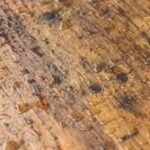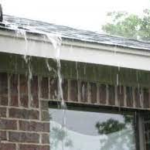what are paint thinners used for? When applying oil-based paint, paint thinner is an essential ingredient. The formulation reduces the viscosity of the paint. It can be used to clean painting equipment, get a new finish on your painting project, and remove paint from several surfaces, including metal and wood.
When embarking on a household painting project, you’re likely to hear the term “paint thinner” tossed around. But what exactly is a paint thinner?
A paint thinner is a versatile solution used to thin or dilute oil-based paints, and its applications extend beyond just that. So, what are paint thinners used for, and how can they be an essential tool in your painting endeavors?
The word “paint thinner” refers to a broad range of solvents used to thin paint or make it easier to remove paint from brushes, rollers, and other painting instruments.
Turpentine, acetone, naphtha, toluene, and xylene are typical examples of paint thinners.
These strong solvents efficiently dissolve oil-based paints, primers, and stains, making it more straightforward to remove paint from surfaces and clean painting supplies.
What is Paint Thinner Made of?
Paint thinner is a versatile solvent primarily used for diluting oil-based paints. However, it finds applications in various industrial processes, such as cleaning up paint spills or removing grease. The diversity of applications raises the question: How is paint thinner made?
Some paint thinners may consist of a single chemical, such as acetone, turpentine, naphtha, or toluene. Others may be a blend of multiple substances.
In essence, the term “paint thinner” encompasses a wide range of liquids, each falling under this category due to its ability to dilute and dissolve oil-based paints.
Types of Paint Thinner
As previously mentioned, the term “paint thinner” encompasses various solvents, each providing a profound answer to the question, “What are paint thinners used for”? They are suitable for specific purposes such as the removal of nail polishes, grease from car parts, etc.
Here is a list of some of the most common paint thinners used in both household and industrial settings:
1. Acetone
Acetone is a versatile liquid often referred to as paint thinner. It effectively thins paint and is also helpful in removing glue, nail polish, and ink stains.
2. Turpentine
Turpentine is a popular paint thinner widely employed in various industries. Aside from paint thinning, it can be used as a varnish for cleaning specific surfaces.
3. Mineral Spirit (White Spirit)
Mineral spirits, also known as white spirit, are another highly prevalent paint thinner. They are excellent for removing grease from car parts and are commonly used in household applications like cleaning brushes and removing paint from surfaces.
4. Toluene
Toluene is an industry-grade paint thinner suitable for diluting print ink, adhesives, and rubbers. Some industries even use toluene as a combustion fuel in specific vehicles.
5. Naphtha
Naphtha is a common paint thinner used to dilute regular paints. However, it is more prominently employed in crude oil production to facilitate the movement of oil through pipelines.
6. Isopropyl Alcohol
While isopropyl alcohol can effectively thin paint, it makes the paint harden quickly upon application. This characteristic can leave brush marks on the painted surface.
7. Methyl Ethyl Ketone (MEK)
This is also known as butanol and is primarily used in industrial processes, such as diluting gums and resins.
Listed above are the most common paint thinners available today, and they are often collectively referred to as “paint thinners.”
However, it’s important to note that while any of these solvents can be used for painting, certain varieties are better suited for household purposes, while others excel in industrial applications.
Therefore, it is crucial to determine which type of paint thinner best suits your specific needs by understanding the functions of these solvents.
What is Paint Thinner Used For?
Now that we have explored what paint thinners are, what are the types of paint thinners, and what they are made of, it’s time to focus on the primary question, —what are paint thinners used for?
Paint thinner plays a pivotal role in various aspects of painting projects. Here are some of its key applications:
1. Diluting Paint

The primary function of paint thinner is to dilute oil-based paints, reducing their viscosity and making them more manageable for application.
This is particularly useful when you need thin paint for tasks such as filling a paint sprayer or achieving a specific finish on your painting project.
2. Cleaning Painting Apparatus
Painting involves a range of tools, from brushes and rollers to paint trays and containers. After completing a painting project, these tools often become coated with dried paint.
Paint thinner is invaluable for cleaning and reviving these tools. By immersing paintbrushes and rollers in paint thinner, you can dissolve and remove the dried paint, allowing you to reuse the tools for future projects.
3. Removing Paint From Surfaces or Spills
When you decide to repaint a surface but need to remove the existing layer of paint, paint thinner comes to the rescue. It softens the old paint, making it easier to scrape away.
Additionally, paint thinner can be used to clean up paint spills and accidents efficiently.
4. Creating Specific Finishes
An answer to the question— What are paint thinners used for? Can be seen in the creation of specific finishes. Achieving the desired tone, thickness, and appearance in your paint job requires adjusting the paint’s consistency.
By using paint thinner, you can thin out the paint, making it easier to spread and allowing you to customize the finish to your liking.
5. Reviving Dried Paint
In some cases, paint may become too thick or dry out over time. Paint thinner can help restore the paint to its original consistency, ensuring that it remains usable.
Safety Considerations To Remember When Using Paint Thinners
Besides getting an answer to the question “What are paint thinners used for, it is also essential to know that most paint thinner products contain potent chemicals that can be hazardous when exposed to the nose, mouth, throat, lungs, and eyes.
These solvents are typically corrosive and harmful to the skin. Therefore, it is imperative to follow safety guidelines when using them.
Paint thinners are highly flammable, so keep them away from sources of ignition or heat. Also, When working with paint thinners, always operate in a well-ventilated space. Additionally, ensure you have the appropriate safety equipment, including:
- Breathing Protection: Use a mask or respirator designed for chemical fumes.
- Gloves: Wear chemical-resistant gloves to protect your hands.
- Protective Clothing: Opt for a long-sleeve shirt and long pants to shield your skin from exposure.
- Closed-Toe Shoes: Protect your feet by wearing closed-toe shoes.
- Safety goggles with a rubber seal: Choose goggles that prevent eye irritation from the fumes or splashes.
By keeping to these safety precautions, you can significantly reduce the risks associated with working with paint thinners.
Paint Thinner Alternatives
While some individuals still ask the question, What are paint thinners used for, others have concerns about their potential health risks due to exposure to chemicals.
Fortunately, there are safer alternatives to traditional paint thinners that can be used with confidence. Here are a few of these alternatives:
Lemon and Linseed
A safer alternative to conventional paint thinners is a mixture of lemon oil and linseed oil. This natural solution can be purchased from most supermarkets.
To create the mixture, combine lemon oil and linseed oil in a 4:1 ratio, stirring the blend for approximately five minutes before adding it to your paint. This alternative provides a safe and environmentally friendly way to thin paint.
Water
While not as effective as traditional paint thinners, water can serve as a safe alternative for thinning acrylic and latex paints.
It’s essential to note that water should only be used with water-based paints and should be added cautiously to avoid over-dilution, as you cannot quickly thicken the paint once it becomes too thin
Vinegar
Vinegar is another unconventional but effective kitchen-based alternative for thinning paint. To use vinegar as a thinner:
- Mix clear vinegar with your paint at a ratio of approximately one cup of vinegar per gallon of paint.
- Add half a cup of vinegar, stir, wait for five minutes, then add the remaining half cup.
- Test the paint after the waiting period, and if further thinning is necessary, add vinegar in small increments.
- As with water, exercise caution to avoid over-thinning.
Baby Oil
For oil-based paints, baby oil can serve as a natural alternative for thinning. It’s important to use natural baby oil free from other chemicals or compounds.
Gradually pour the baby oil into the can of paint while continuously stirring the mixture. Test the paint’s consistency, and if needed, add more oil sparingly.
Keep in mind that using baby oil may increase the sheen of oil-based paints and prolong drying time.
These alternatives offer safer options for thinning paint while reducing exposure to potentially harmful chemicals.
However, it’s essential to be aware of their specific characteristics and limitations before deciding which alternative to use for your painting project.
Final Thoughts
Seeking an answer to the question, “What are paint thinners used for?” Keep in mind that it is a versatile solvent with a wide range of applications, from artistic endeavors to industrial tasks.
When using paint thinner for household projects, it’s crucial to determine which type best suits your needs. Whether you’re diluting paint, cleaning painting tools, removing paint from surfaces, or achieving unique finishes, paint thinner can be an invaluable tool in your arsenal.





